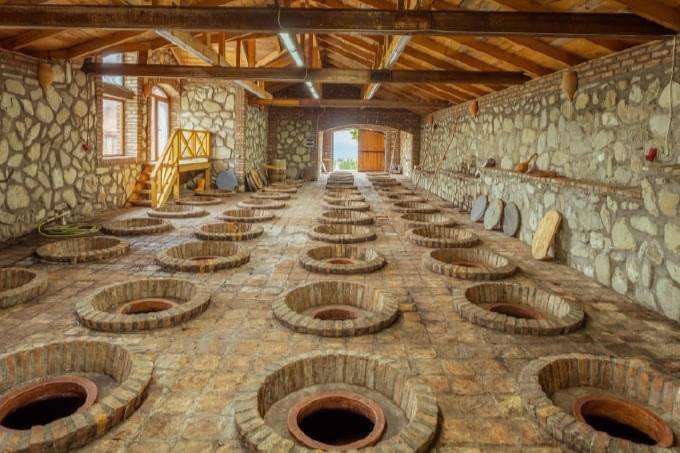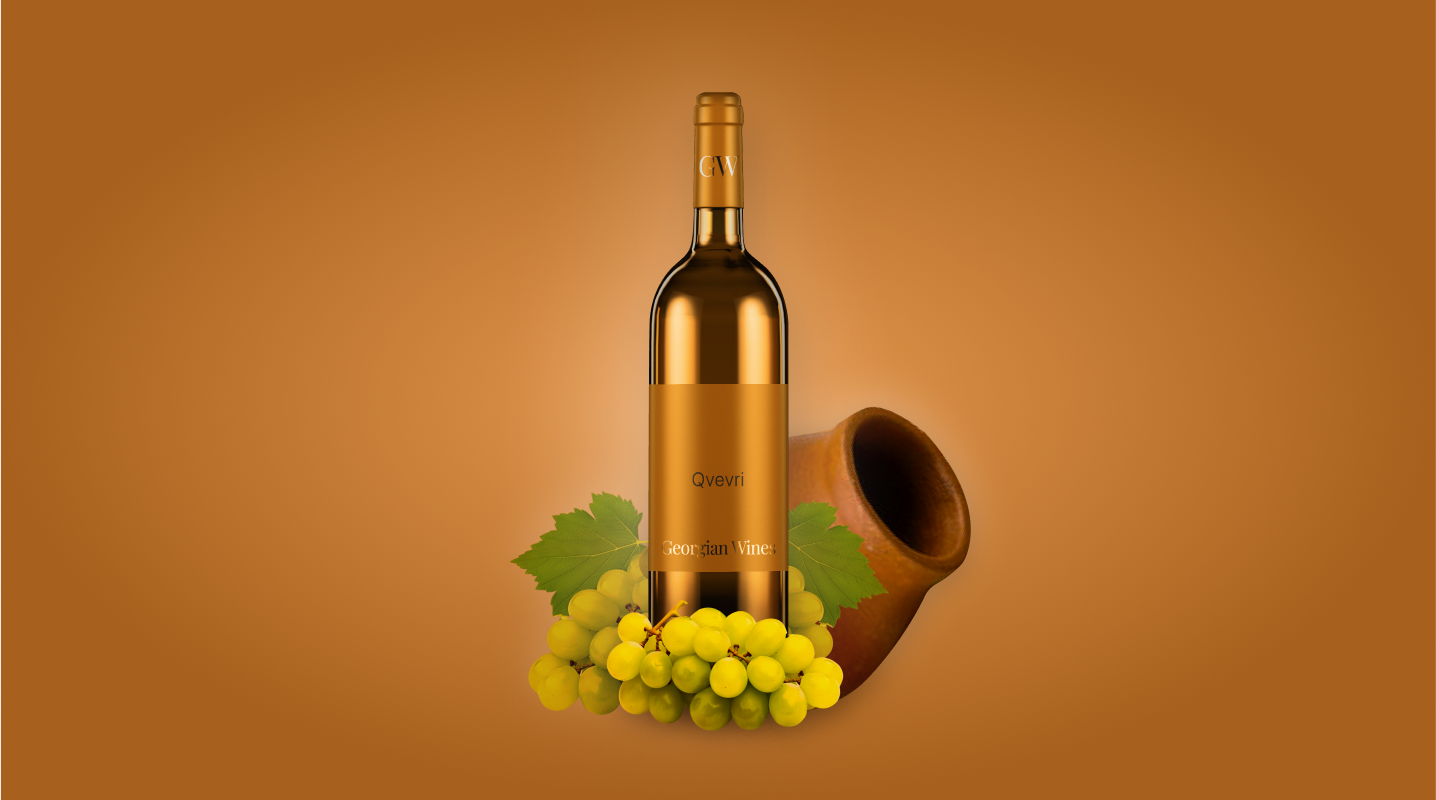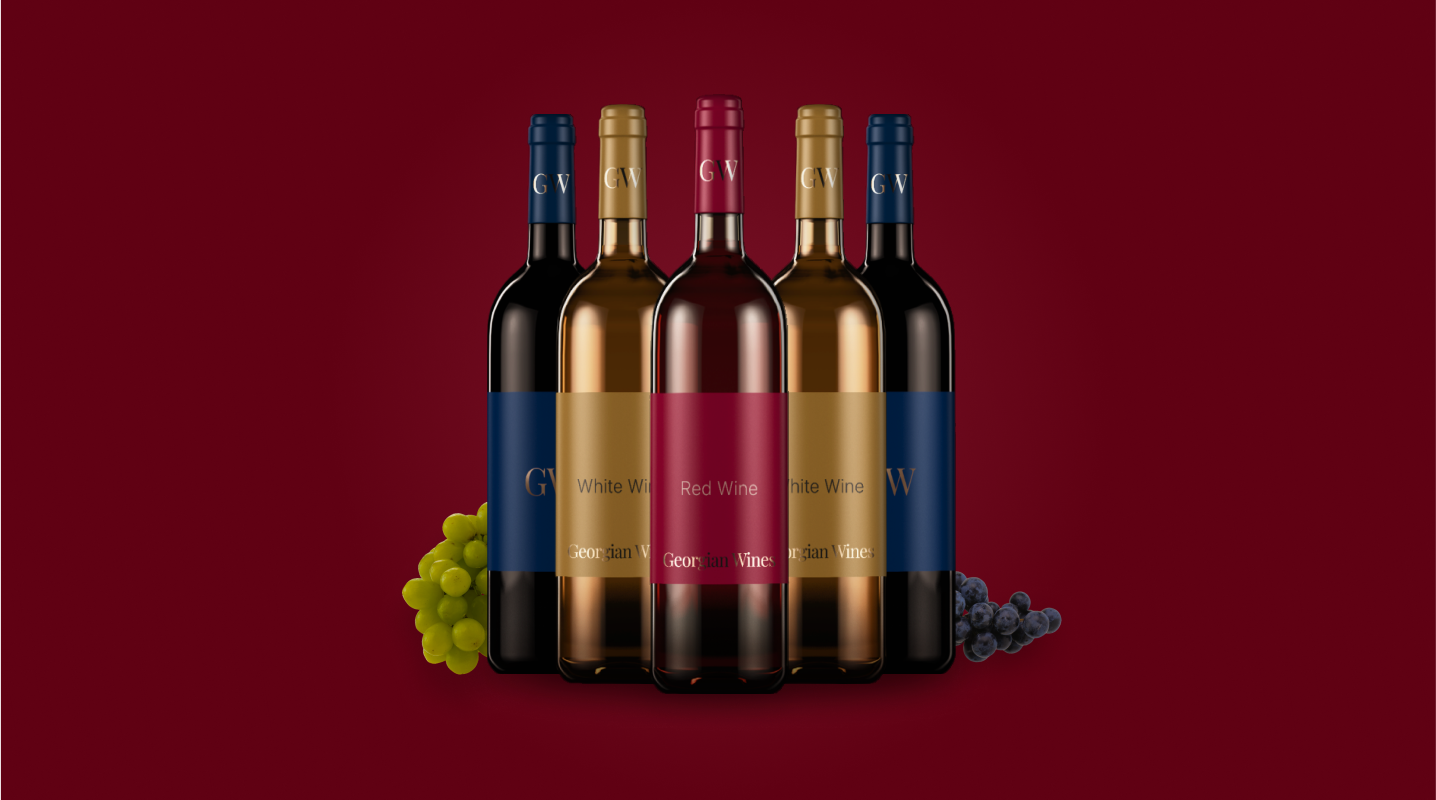Deep golden-orange color, bold character, 8000 years of wine making!
Georgia, the country where wine-making is as old as civilization itself, is the homeland of the most captivating styles of wine - orange wine, which in Georgia is described and called as Amber wine. This unique style of wine builds a bridge between history and modernity, reminding the world where all those #Natural, #Orange, #Spontaneous and #Wild come from.
Amber wine’s recent rise of popularity is no accident. Wine lovers are seeking something different, taking more value to nature and appreciating artisan work. And these all take root in the land between Eastern Europe and Western Asia, nestled beneath the majestic Caucasian mountains and along the shores of the Black Sea. So, let’s take a look together, what the craft of Georgian winemaking has to share with the world.
What is Amber Wine?
Amber wine is made from white grape varieties, but with one key difference: the grape skins are left in contact with the juice during fermentation. This process, known as skin contact fermentation, is usually reserved for red wines but gives amber wines their distinctive golden to deep orange hue, as well as a more complex flavor profile.
Did you know that the color of the red wine comes from skin contact fermentation (also known as maceration)? That’s why all red wines are skin-contact wines.
That is where white, red, rose and amber wine meet up:
|
Long contact with grape skins |
Short contact with grape skins |
No contact with grape skins |
|
| Red Grapes | Red wine | Rosé | White wine |
| White Grapes | Orange wine | Orange wine | White wine |
The Unique Qvevri Method
The heart of Georgian amber wine lies in the qvevri, which has been a symbol of Georgian wine culture for thousands of years. These egg-shaped clay vessels allow the wine to naturally ferment with minimal intervention, keeping the winemaking process as pure and natural as possible.
After the grapes are harvested, they are crushed-skins, seeds, and sometimes even stems are added to the qvevri. The grape juice ferments with the skins for weeks or even months, drawing out tannins, color, and flavors from the skins. This traditional process gives Georgian amber wines their distinct tannic structure, earthy aroma, and rich texture.
Once fermentation is complete, the qvevri is sealed with clay or beeswax and left to age for several months, sometimes even years. The wine is then carefully extracted from the qvevri, bottled, and ready to be enjoyed.
Some key benefits of qvevri: Qvevris are buried underground, which provides a stable temperature for fermentation and aging the wine. Their unique shape allows sediments to settle at the bottom, ensuring the clear wine can be easily drawn off from the top.
History (or the main question : How did Georgia preserve this traditional method and carry it into the modern, challenging reality?)
Georgia has managed to preserve its ancient winemaking traditions, particularly the production of amber wine, through a combination of cultural pride, resilience, and a deep connection to the land. For centuries, winemaking in Georgia wasn’t just an agricultural practice but a deeply ingrained part of the country’s identity and spirituality. Despite invasions, wars, and political upheavals, including the Soviet era when industrial wine production was prioritized, many Georgian families continued to use traditional methods, such as fermenting wine in qvevri.
This cultural preservation was largely driven by rural communities where winemaking was passed down through generations. Georgian winemakers remained committed to their craft, viewing it as a sacred duty to maintain the authenticity of their wine, regardless of external pressures to modernize or industrialize their processes.
As the world has increasingly sought out more authentic, artisanal products in recent decades, Georgian winemakers have found an audience ready to appreciate their untouched, ancient techniques. Today, their efforts are recognized internationally, and Georgian amber wine stands as a testament to how a small country can preserve its traditions while making a significant impact on the global wine scene.
This is an old Georgian saying: “some bad things are beneficial”. Just like it was in 2006, during the Russian embargo, which has restricted Georgian wine export to Russia. It was a huge economic crisis for Georgia, because the Georgian wine market depended on Russia. But Georgia has adapted by focusing on international markets and strengthening its domestic wine industry. The country has leveraged its unique wine heritage to attract global interest, emphasizing its distinct qvevri fermentation method.
Must be mentioned, that the practice of qvevri wine making was popularized by Italian and Slovenian winemakers, after visiting Georgia and importing qvevris. Now qvevri wines are produced in Spain, Italy, Slovakia, Austria, Germany, New Zealand, and California.

Tasting Notes: What to Expect from Amber Wine
One of the most delightful aspects of amber wine is its depth of flavor and versatility. Expect a wine that balances earthy, fruity, and floral elements, with an exciting texture you don’t usually get from typical white wines. Depending on the grape variety and region, you might taste:
- Dried apricots, peach, plums, quince
- Walnuts, almonds, or spices
- Honey and citrus peel
- Herbal and tea-like notes
Because of the skin contact, amber wines also have a tannic structure-something more common in red wines-giving the wine a full-bodied, slightly grippy texture on the palate. These wines are beautifully complex and change over time in the glass, making every sip a new experience.
Because of this complex character of qvevri wines, it is recommended to serve it slightly chilled. More about serving temperature and recommended wine glass read in my short guide: How to drink Georgian wine?
Amber wine and food pairings
Georgian amber wine, known for its rich, complex flavors and distinctive orange hue, offers a delightful range of food pairing possibilities. Here are some ideal food pairings to complement Georgian amber wine:
- Traditional Georgian Dishes
- Grilled Meats
- Spicy and Savory Foods
- Cheeses
- Hearty Stews
- Roasted Nuts and Dried Fruits
Overall, Georgian amber wine's versatility makes it a great companion for a wide array of foods, allowing its unique characteristics to shine through in various culinary contexts.
Whether enjoyed with traditional Georgian dishes or as part of a modern culinary adventure, amber wine invites wine lovers to explore its complex character and discover a wine style that is both timeless and distinct. With every sip, you're not just tasting a wine but experiencing a tradition that has endured for over 8,000 years.







